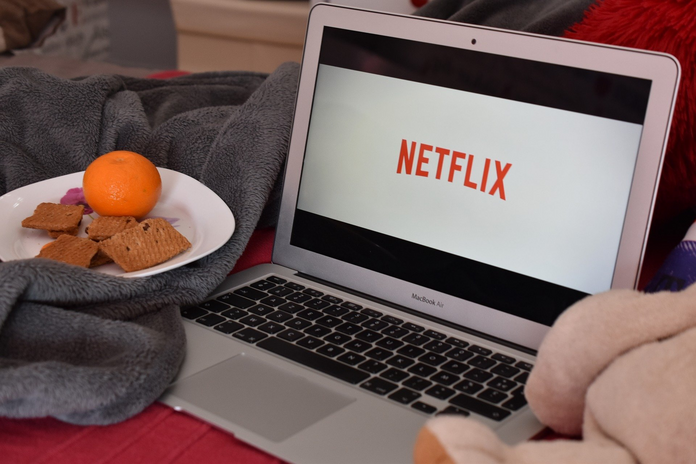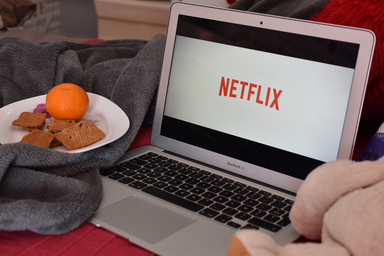Whether you witnessed the phenomenon as a teen in the 90s or learned about it later in trivias and game shows, odds are you’ve heard of the wildly successful series, The Baby-Sitters Club. This story of young female entrepreneurs and friendship was a staple of the 1990s, and it has recently come back to inspire girls of a brand new generation.
And I thought, wouldn’t it be a great idea if you could, like, make one phone call and reach a whole bunch of good sitters at the same time?
Kristy’s Great Idea (S1:E1)
Originally a series of over 200 novels created by Ann M. Martin, The Baby-Sitters Club follows a group of young girls — Kristy, Mary Anne, Claudia, and Stacey — who decide to create their own babysitting business to make money and help their neighborhood’s parents. The novels have had multiple adaptations, including graphic novels, a 1990 TV show, a 1995 movie, and a 2020 Netflix Original adaptation, whose second season was recently released this past October. The Netflix show’s two seasons have received an exceedingly positive response from viewers. Both seasons received a score of 100% on Rotten Tomatoes and season one was nominated for 7 (and won 2) Daytime Emmy Awards.
However, the Netflix adaptation’s biggest success might be attributed to how it effortlessly modernized the original 90s novels into a TV show set in 2020 while maintaining their charm. The new show even keeps the iconic landline with which the club books their jobs in a realistic, clever way. In an interview with ET, showrunner Rachel Shukert spoke on how she was able to bring these characters to the modern day: “It’s always an interesting exercise to take characters that existed in one time and ask, who would they be now? And they’re not that different. They’re into different things. They read different books. They’re into slightly different fashion or music, but the essence of who each of those girls are has not really changed.”
The show also creates new representation for its viewers within its cast of characters, casting mixed-raced Malia Baker to play Mary Anne and Mexican-Americans Xochitl Gomez (season 1) and Kyndra Sanchez (season 2) to play Dawn Shafer, who were originally white in the books. In addition to racial diversity, the Netflix adaptation has a variety of LGBTQIA+ main and side characters, and even includes an episode where Mary Anne babysits, and stands up for, a young, transgender girl.
No matter where we were or who we met along the way, we were still us.
Hello, Camp Moosehead! Part 2 (S1:E10)
At the heart of The Baby-Sitters Club is a story that explores the strengths of female friendships and young girls’ minds while tackling different difficulties girls may encounter in their pre-teen and early teen years. The show offers a refreshingly realistic depiction of 13-year-old girls (actually played by young teenagers) in times where teens in shows can often feel like adults in disguise. The girls in The Baby-Sitters Club struggle with issues that any girl can relate to while growing up: discovering your identity, dealing with annoying family members, getting your first period, making new friends, and living up to others’ expectations. The show treats these problems in a way that doesn’t look down on its target audience and instead acknowledges the actual effects they can have and shows how each girl learns and grows from them.
However, the show’s focus on day-to-day issues doesn’t mean that it shies away from more serious topics. Throughout the series, the main characters also grapple with more hard-hitting issues. The episode “The Truth About Stacey” explores Stacey’s history of being diagnosed with type-1 diabetes and the bullying she endured from her previous classmates. In “Claudia and Mean Janine,” Claudia learns about her family’s history in Japanese internment camps during World War II. The series also delves into different familial conflicts and grief; it explores how the girls cope with each of these difficult situations and shows how they often rely on each other to do so.
All things considered, the aspects that really make this show stand out as a must-watch for young girls are its well-developed familial and platonic relationships. It’s standard that in teen shows parents are absent or one-dimensional, but that is not the case here. Each of the girl’s families plays an active role in their lives and even has their own subplots and arcs. Kristy struggles with her mother’s upcoming remarriage to Watson Brewer, who actively seeks out ways to connect with Kristy. Mary Anne’s father learns to be more lenient and less overprotective of his daughter. Claudia finds comfort with her grandmother Mimi, whom Claudia considers to be the only person who understands her. They all navigate and strengthen these relationships in realistic (and occasionally tear-jerking) ways.
The friendships in the series are no less impactful. Every girl is extremely different and comes from different backgrounds, but they still understand and appreciate each other. They may clash and argue, as all friends occasionally do, but they always support each other and have their backs. In a world where the media often portrays unnecessary girl-on-girl rivalries, it’s important for young girls to see strong, female friendships represented in a realistic and healthy manner.
I started The Baby-Sitters Club to take care of kids. But what I didn’t realize was that it was to also take care of me. Because we were more than a club. We were best friends.
Kristy’s Big Day (S1:E8)
In the end, watching Netflix’s The Baby-Sitters Club feels like a warm hug from your closest friends. The series is a must-watch for young girls who wish to see themselves on screen and for older audiences who want to reminisce about the trials of early teen life.
You can watch The Baby-Sitters Club on Netflix now.


